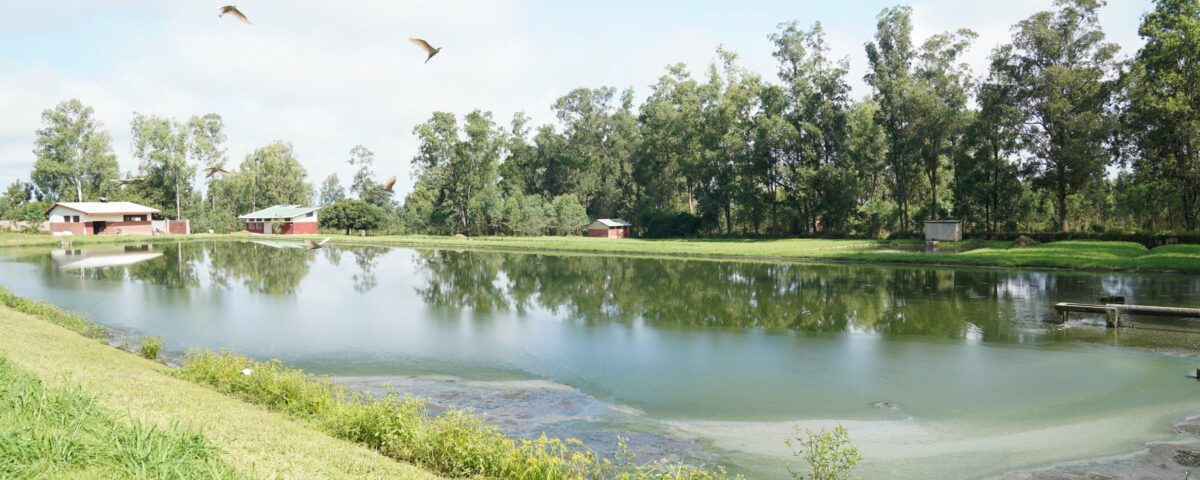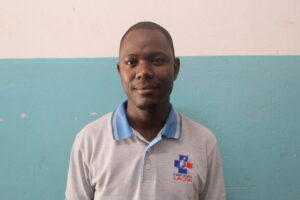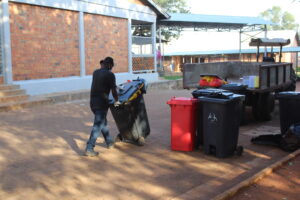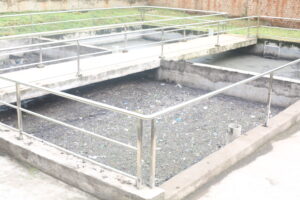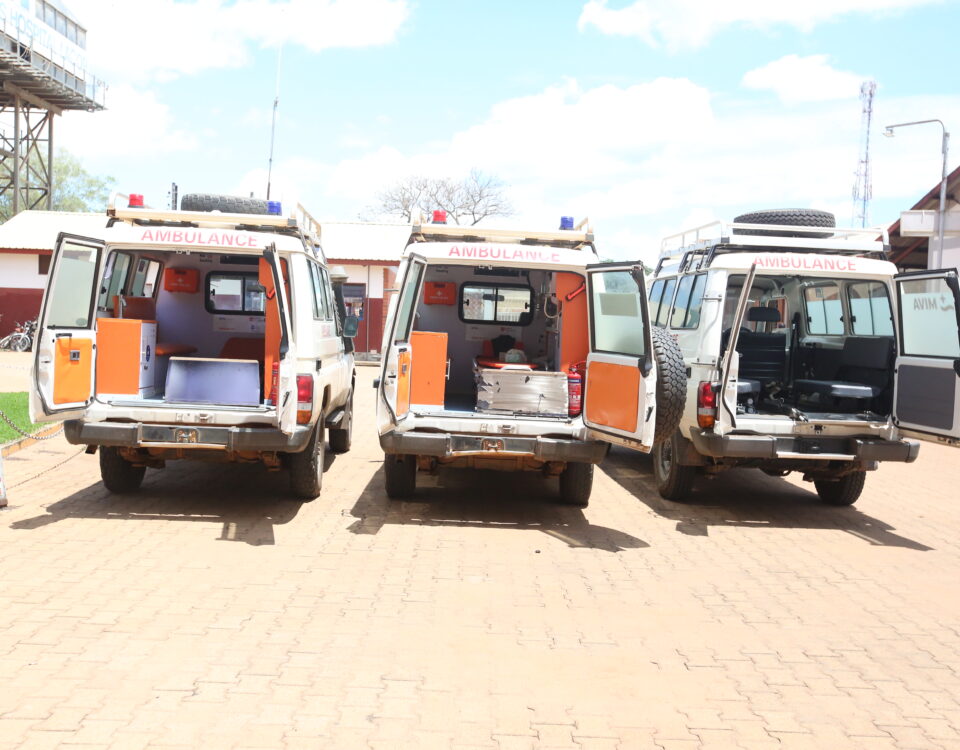In the heart of Gulu City, Northern Uganda, where challenges of poverty and limited resources often overshadow hope for healthcare equity, our Hospital—St. Mary’s Hospital Lacor stands as a tower of not just hope but a safe haven for all. For decades, we have delivered life—saving care to thousands, defying the odds with solutions born not from abundance, but from necessities.
At the core of our operation lies an unassuming yet extraordinary system—a waste and drainage lagoon. What began as a practical solution to manage wastewater and stormwater has evolved into a lifeline, ensuring the hospital’s ability to function, thrive, and continue its mission of healing in one of the world’s most resource-constrained settings.
The origin of this system traces back to the turbulent years of 1996 and 1997, when northern Uganda grappled with the Lord Resistance Army insurgency. As soldiers dug hiding tunnels to escape the violence, a different kind of digging was taking place at our hospital. The late Brother Elio Croce, a Comboni missionary and engineer, armed with little more than shovels, hoes, and determination, led a team of local engineers and laborers to dig tunnels and ponds that would forever change the hospital’s sanitation and waste management system.
Amid the turmoil that surrounded us, by 2003, with support from the Italian Episcopal Conference, our efforts culminated in the completion of the waste and drainage lagoon—a system that would become the backbone of our hospital’s operation not only in urgencies but for a sustainable future as well.
Olanya Joe Francis, a technician who has worked at the hospital for 27 years, shared his memories from the early days by the lagoon. “I started my first job at the hospital in 1997. Back then, we used septic tanks, which seemed like a great idea at the time, but they had their problems. I remember the frustrations of clogged tanks, overflowing waste, and the awful smells that filled the hospital. It feels like just yesterday, and those experiences taught us a lot about improvement.”
While still sharing the experiences that he thought evoked improvement, he highlighted that the lagoon was established to respond to the growing population within the hospital. The hospital had expanded, and the existing waste management had become inadequate and ineffective. He said clogged septic tanks, coupled with unpleasant odors, led to dissatisfaction among the residents.
He went on to explain that the lagoon consists of four ponds that utilize natural processes to break down waste from the hospital, staff residences, schools, and other departments, including wastewater from kitchens, bathrooms, and rainwater. The process begins at the Pre-Treatment Unit, where sludge and large debris are trapped. Gravity then directs the purified liquid into the Anaerobic Pond, where bacteria break down organic matter and solids.
From the Anaerobic Pond, the liquid flows into two additional ponds where further cleaning and treatment take place. Finally, the water reaches the Maturation Pond, where sunlight and natural processes disinfect the water, removing pathogens before it is discharged.
Beyond its functionality, Joe emphasized how deeply rooted the system is in environmental conservation. He said it was intended to prevent pollution by safely treating and managing waste, ensuring that harmful substances don’t seep into the surrounding soil or water sources.
The lagoon is a lively home for many creatures, like fish swimming in the water and alligators sunbathing on the shore. Birds such as great egrets, little egrets, and white ibises soar through the sky, adding beauty to the scene.
These animals are more than just residents; they are important signs of the lagoon’s health. If we start to see them disappear or suffer, it usually means something is wrong, like contamination in their environment. Each of these creatures plays a role in keeping the lagoon balanced, and their well-being is a reminder that we must care for this precious habitat.
By ensuring a reliable and efficient waste management system, medical procedures and daily activities go on smoothly without interruption caused by sanitation issues.
Creating a reliable and efficient waste management system requires deep passion and commitment. It’s a journey where love for nature merges with a collective vision. Our dedicated team of five actively brings this mission to life: Boniface and Michael tirelessly operate the incinerator, while Moses and Alfred diligently maintain the lagoon, and Emmanuel drives our initiatives forward.
Ojok Emmanuel carries a profound obligation to honor the legacy of the late Brother Elio. Reflecting on his journey at the lagoon—a place filled with memories and gratitude—he shares, “I have been working in the hospital since 2006, starting as a builder and later transitioning to a driver, responsible for collecting waste from the hospital. Each role I have embraced, both past and present, draws me closer to the memory of the man I consider a father, mentor, and guardian. Brother Elio took me under his wing at a young age, nurturing my education and shaping my future. This bond we share intertwines through the fabric of my work and my life.”
As he speaks, the depth of his words uncovers a narrative of purpose—one that extends beyond the jobs he has held to highlight the transformative influence of Brother Elio in his life. This legacy of care and mentorship not only drives Ojok’s daily efforts but also inspires him to share that same compassion with our hospital community.
This commitment to honor is not solely Ojok Emmanuel’s; it is also embodied by others, such as Olanya Joe Francis and the lagoon team. For them, their work transcends the typical notion of a job; it is a blend of honor, love, and dedication. They are invested in the well-being of both the hospital and its patients, as well as the surrounding environment.
Every six months, they meticulously empty the Pre-treatment Unit (PTU), diligently checking for contamination or blockages and monitoring the overall integrity of the facility. By maintaining detailed records of test results and equipment, they ensure they are always prepared for any potential spills or leaks. This thorough maintenance not only bolsters hospital operations but also lays the groundwork for crucial steps in ensuring environmental safety and compliance.
Over the years, the lagoon has transformed into more than just a practical solution; it has become a symbol of environmental responsibility and community awareness, fostering stronger connections with the very people it serves.
However, despite its significant evolution to address the challenges posed by a growing population, climate change, and the expansion of the hospital, these factors continue to threaten the sustainability and effectiveness of the lagoon system.
The population served by the hospital has surged exponentially, tripling since the 1960s and doubling since 2003. This rapid demographic growth imposes immense pressure on the lagoon’s capacity to manage waste efficiently.
As the hospital expands its services and welcomes an increasing number of patients, the lagoon remains central to its identity. Yet, with this growth come challenges. The plans for new wings, advanced medical facilities, and a larger staff to meet rising demands raise a critical question: Can the lagoon, the lifeblood of healing and hope, continue to sustain the hospital as it evolves?
Historically, the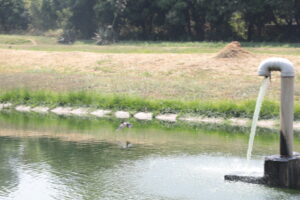 lagoon has adapted, with its waters mirroring the changing needs of the hospital and its community. However, as these demands increase, one must ask whether the lagoon’s ecosystem can bear the weight of this strain.
lagoon has adapted, with its waters mirroring the changing needs of the hospital and its community. However, as these demands increase, one must ask whether the lagoon’s ecosystem can bear the weight of this strain.
The solution lies not solely in the hands of the hospital’s administrators or environmental specialists but in the collective hearts of all those who have been touched by the lagoon’s enduring magic.
As Joe aptly expressed, “The lagoon isn’t just part of the hospital—it’s its very soul”. As long as that soul continues to beat, St. Mary’s Hospital Lacor will remain a light of hope for healing in the ever-changing world.

